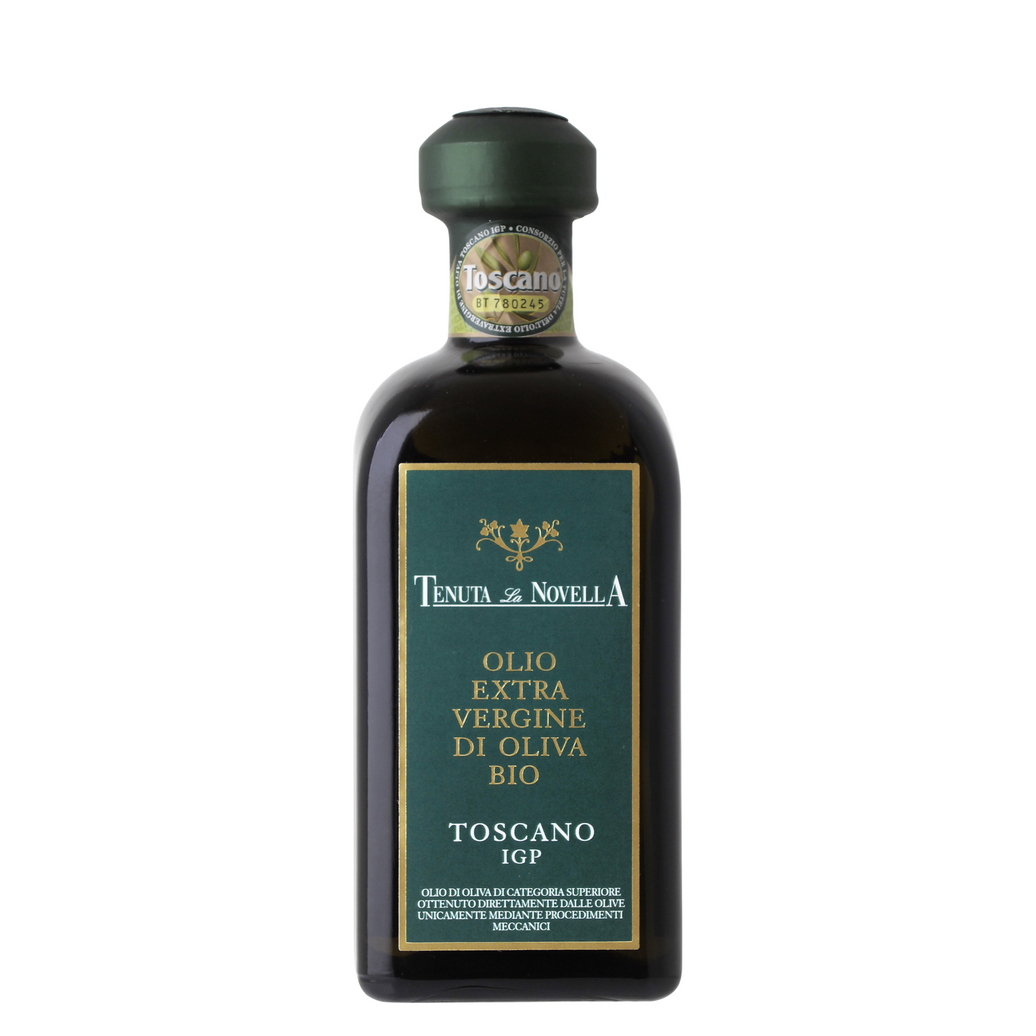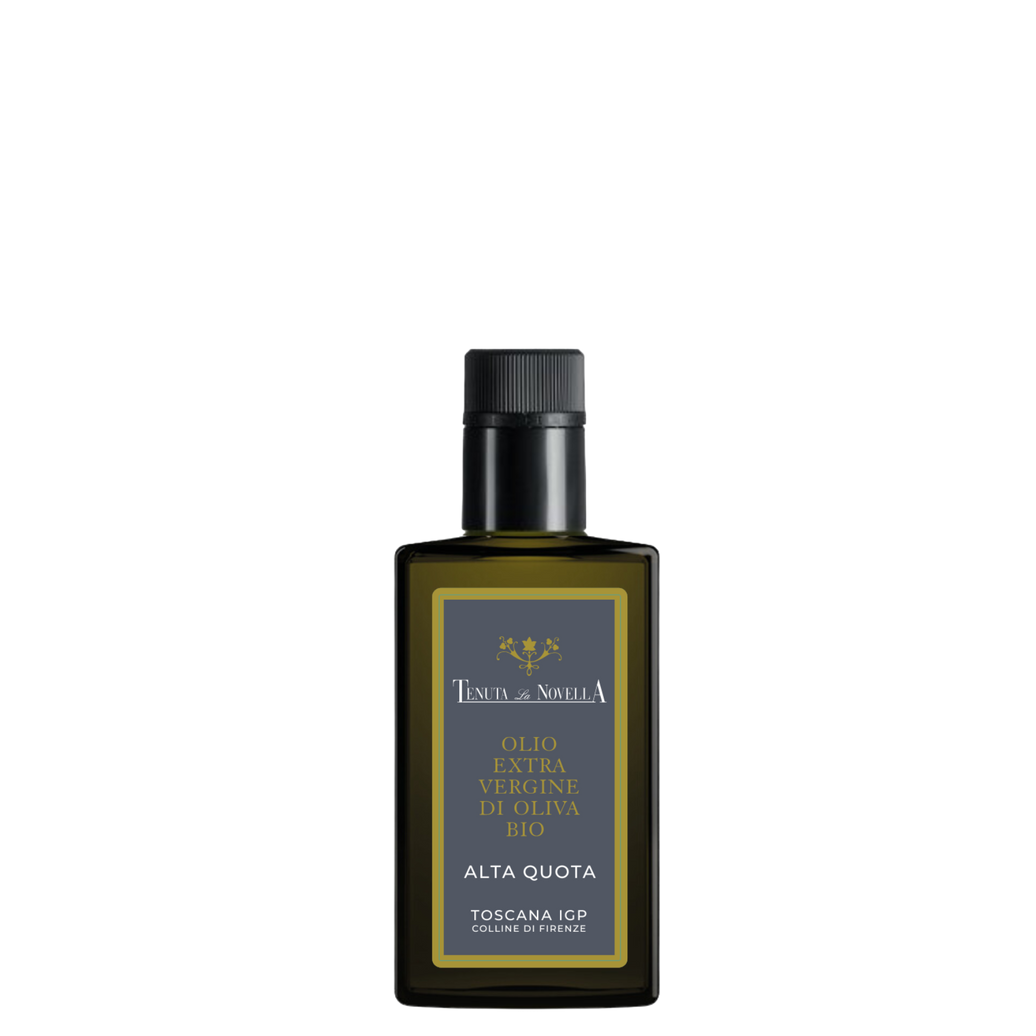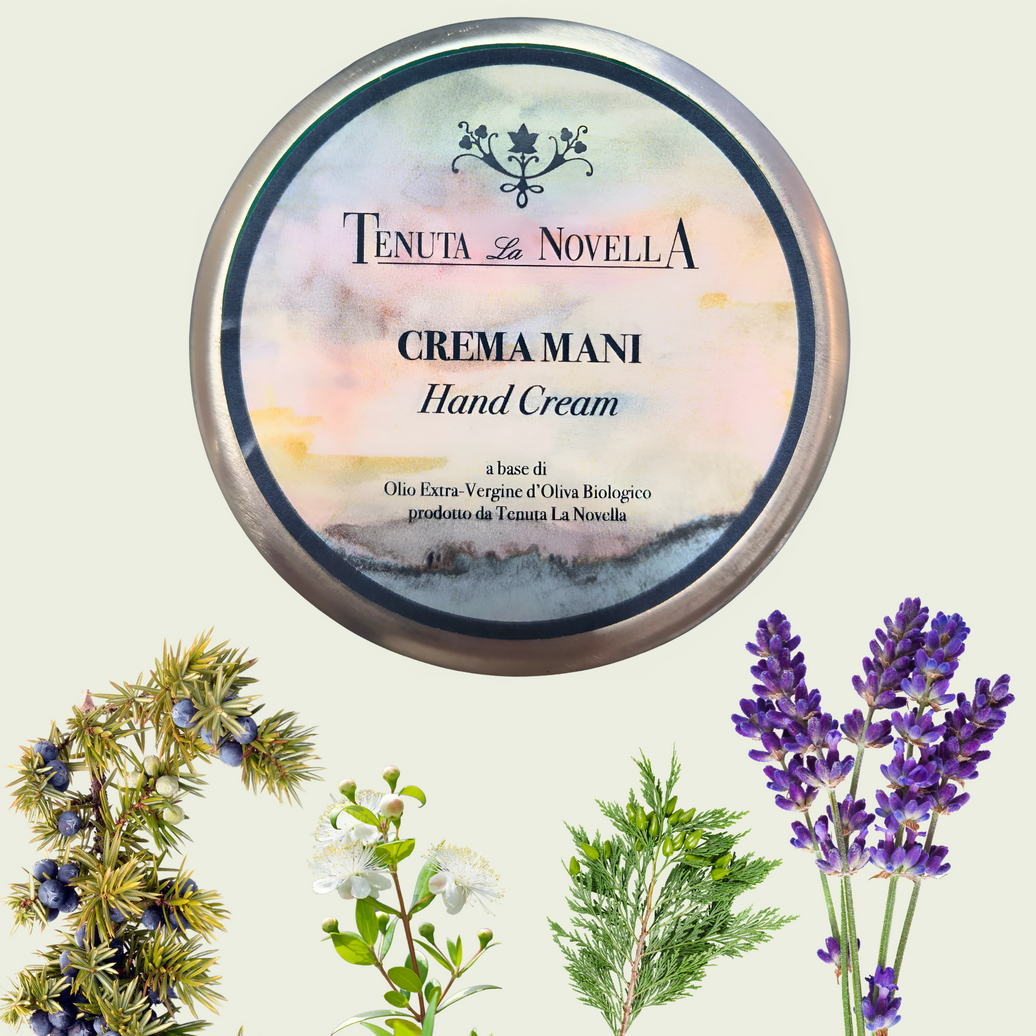Organic farming
The 20 hectares of olive trees spread across Tenuta la Novella are notable for the predominance of Moraiolo (70%),
thriving next to Frantoio (20%), Leccino (5%) and Pendolino (5%).
The organic practices are supported by Tenuta la Novella’s exceptional geography, where altitude protects trees from the indominable ‘olive fly,’ which is particularly damaging to the quality of oils from the plain.
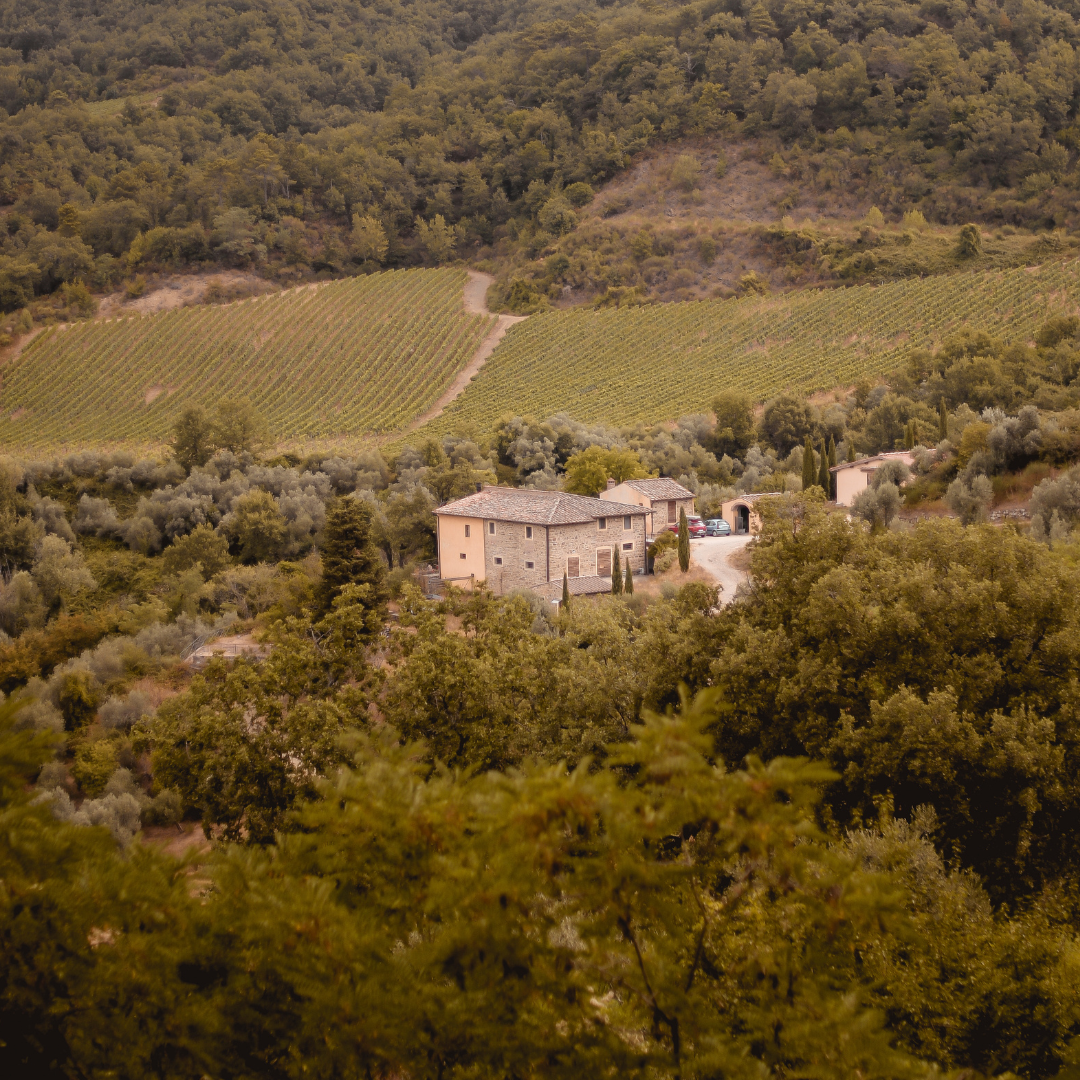
The Olive Mill
According to Tuscan tradition, each estate had its own mill and obtained its own production, harvested by the estate’s farmers. Unfortunately, over the decades, due to various factors such as the rural exodus in the 1960s, the numerous traditional mills gave way to a large majority of industrial mills.
In 1996, François Schneider, wishing to preserve the soul of the estate and to perpetuate the centenary tradition of olive oil production, decided, among other things, to invest in a mill equipped with the latest technology. As a result, today, many of our neighbors come to produce their own oil at our place, “dans les règles de l’art” in the state of the art.
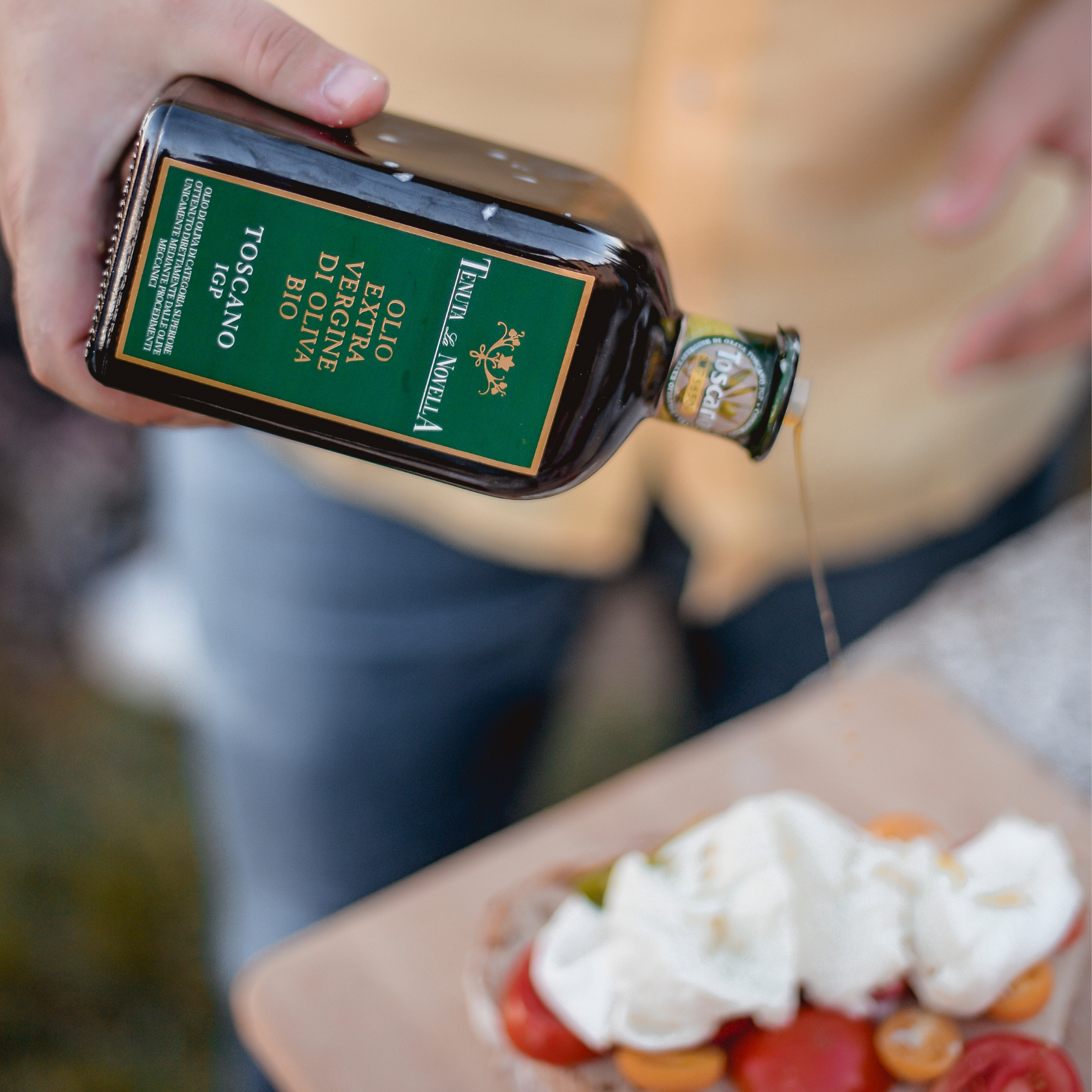
The production process
The leaves are removed and rinsed with water before the olives are ground into a paste. This is heated to a temperature of about 26°C, the optimum temperature for separating the solid part (paste) and the liquid part (oil + water), while preserving the oil’s quality.
The two parts, solid and liquid, are separated by centrifugal force in the decanter.
We then move on to a new centrifugal separation between oil and water to recover the purest possible oil.
The last step before bottling consists of filtering the oil and placing it in stainless steel tanks under inert gas to prevent it from oxidizing.
- Shop now our Extra-Virgin Olive Oil
- and olive oil based cosmetics


